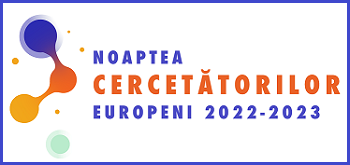| Articolul precedent |
| Articolul urmator |
 |
 504 504 13 13 |
| Ultima descărcare din IBN: 2024-02-15 08:51 |
| Căutarea după subiecte similare conform CZU |
| 821.161.1.09-3”19”(092)ТургеневИ.С.:81.161.1`22 (1) |
| Литература на восточнославянских языках (367) |
| Языкознание и языки. Лингвистика (5046) |
 SM ISO690:2012 SM ISO690:2012ПОНЯТОВСКАЯ, Наталия, ДОЛГОВ, Вячеслав. Символика флорообразов и их худо-жественная роль в повести И. С. Тургенева «Ася». In: Interuniversitaria, 8 octombrie 2020, Bălți. Bălți, Republica Moldova: Universitatea de Stat „Alecu Russo" din Bălţi, 2020, Ediția 16, pp. 39-46. ISBN 978-9975-50-248-1. |
| EXPORT metadate: Google Scholar Crossref CERIF DataCite Dublin Core |
| Interuniversitaria Ediția 16, 2020 |
||||||
|
Colocviul "Interuniversitaria" Bălți, Moldova, 8 octombrie 2020 | ||||||
|
||||||
| CZU: 821.161.1.09-3”19”(092)ТургеневИ.С.:81.161.1`22 | ||||||
| Pag. 39-46 | ||||||
|
||||||
| Rezumat | ||||||
The given article investigates the symbolism of plants in the Turgenev's novelette "Asya". It shows that the symbolism of plants in Turgenev’s creation is based on interaction of two cultural traditions: Slavic worldview and the European tradition of the language of flowers. It also demonstrates the aesthetic role of images of flora in the author’s literary work. |
||||||
| Cuvinte-cheie symbol, plant, language of flower, Slavic worldview, cultural tradition, aesthetic rol |
||||||
|












